Ask Ethan #81: Could you crawl out of a black hole?
Could a strong enough tether save you? Or is your fate inevitable?
“Nobody ever did, or ever will, escape the consequences of his choices.”
–Alfred A. Montapert
Everyone is free to submit their questions and suggestions for our end-of-the-week Ask Ethan column, but only one lucky selection can be the chosen one. This week, the honor goes to first-time submitter klooloola, who wants to know about the possibilities of escaping a black hole. Sure, a photon can’t get out, but maybe something else can, if we set it up like so:
I was wondering if it was possible to crawl out of a black hole. Not by going at an escape velocity, but by using something like a hypothetical elevator. That way you never have to go faster than light. Just as you never have to go faster than earth’s escape velocity if you use a space elevator from earth… a large ship just outside of the Event Horizon of a large enough black hole with little tidal force could dangle a small guy on a strong string just past the inside of the EV and then pull him out…
It’s an interesting idea. Let’s see if it — or any workaround — is possible!
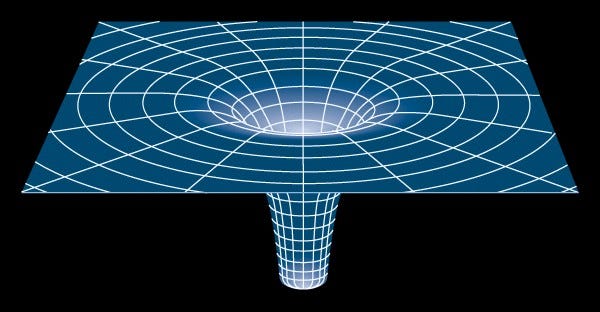
A black hole isn’t merely an ultra-dense, ultra-massive singularity, where space is curved so tremendously that anything that falls in can’t escape. Although that’s what we conventionally think of, a black hole is more accurately the region of space around this objects from which no form of matter or energy — not even light itself — can escape.
This isn’t as foreign or exotic as you might think: if you took the Sun, exactly as-is, and compressed it down to a region of space just a few kilometers in radius, a black hole is exactly what you’d wind up with. Although our Sun is in no danger of undergoing such a transition, there are stars in the Universe that will wind up producing a black hole in this very fashion.
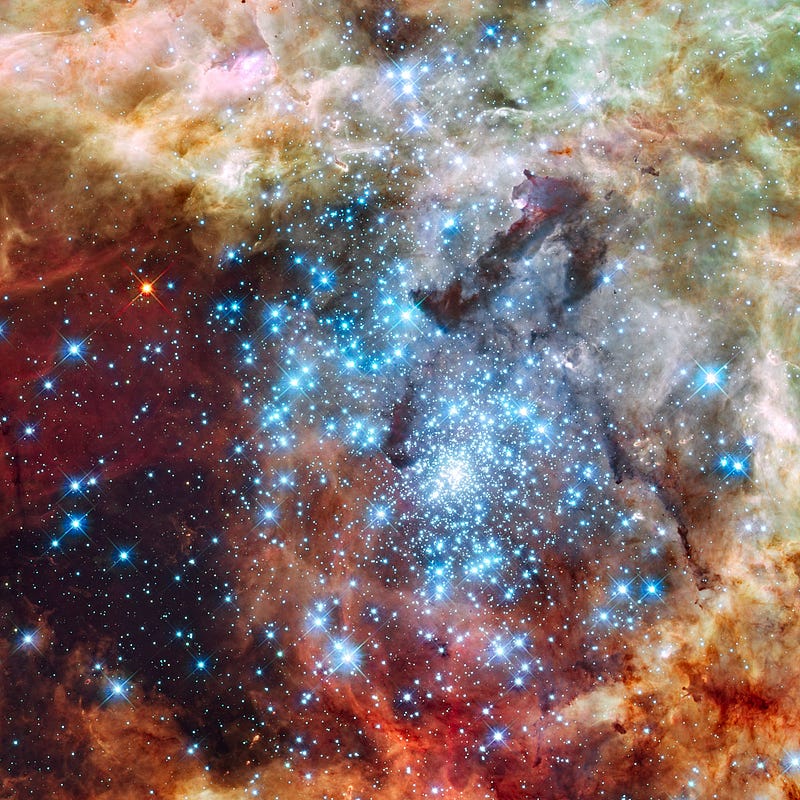
The most massive stars in the Universe — stars with twenty, forty, a hundred, or even, at the core of the super star cluster shown above, up to 260 times the mass of our Sun — are the bluest, hottest, and most luminous objects out there. They also burn through the nuclear fuel in their cores the most quickly of all stars: just one or two million years instead of many billions like the Sun.
When these inner cores run out of nuclear fuel, the nuclei at the core are subject to tremendous gravitational forces: forces so strong that, without the incredible pressure from the radiation of nuclear fusion to hold them up, they implode. In less extreme cases, the nuclei and electrons have so much energy that they fuse into a mass of neutrons, all bound together. If the core is more massive than a few times the mass of the Sun, those neutrons will be so dense and so massive that they themselves will collapse, leading to a black hole.
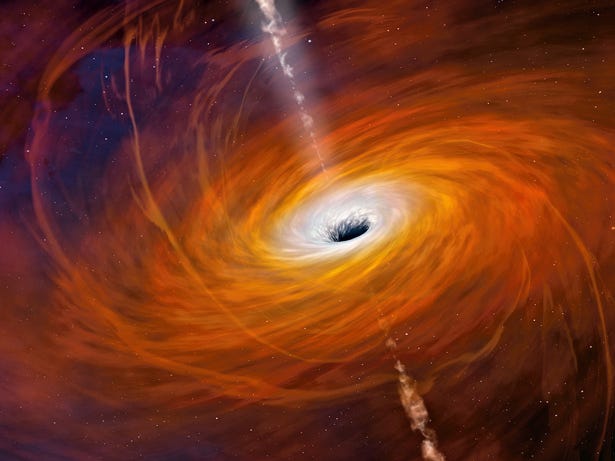
That’s the minimum mass of a black hole, mind you: a few times the mass of the Sun. Black holes can grow much larger than that, though, by merging together, by devouring matter-and-energy, and by sinking to the centers of galaxies. At the center of the Milky Way, we’ve identified an object that’s some four million times the mass of the Sun, where individual stars are seen orbiting it, but where no light of any wavelength is emitted.

Other galaxies can have even more massive black holes that are thousands of times the mass of our own, with no theoretical upper limit to how large they can grow. But there are two interesting properties of black holes that we haven’t talked about, and that are going to lead us to the answer to today’s question. The first is what happens to space the more massive a black hole gets.
The definition of a black hole is that no object can escape from its gravitational pull in a region of space, no matter how quickly that object accelerates, no matter even if it moves at the speed of light. That border between where an object could and an object couldn’t escape is what’s known as an event horizon, and every black hole has one.
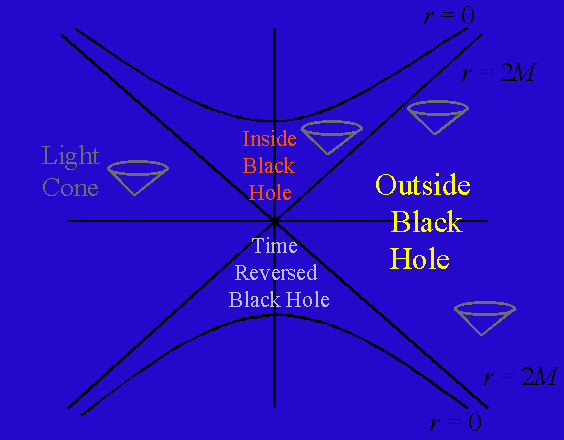
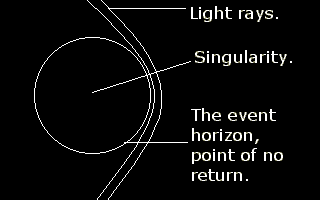
But what might surprise you is that the curvature of space is much smaller at the event horizon around the most massive black holes, and is most severe (and largest) around the least massive ones! Think about it this way: if you “stood” on the event horizon of a black hole, with your feet right at the edge and your head some 1.6 meters farther away from the singularity, there would be a force stretching — spaghettifying — your body. If that black hole were the one at the center of our galaxy, the force that stretches you would be only 0.1% the force of gravity here on Earth, while if Earth itself were turned into a black hole and you stood on that, that stretching force would be some 10^20 times as strong as Earth’s gravity!
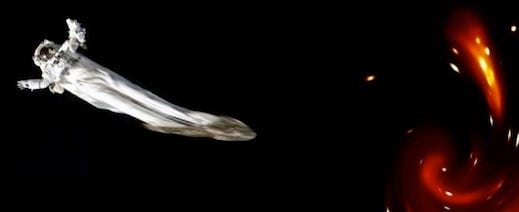
So that would be what we’d want to try to test out klooloola’s idea. Surely, if these stretching forces are so small at the edge of the event horizon, they’re not going to be much larger inside the event horizon, and so — given the strength of the electromagnetic forces that hold solid objects together — perhaps we’ll be able to do exactly what was suggested: dangle an object outside the event horizon, cross it momentarily, and then pull it safely back.
But would that be possible? To understand this, let’s go back to what happens at the very border between a neutron star and a black hole: just at that mass threshold.
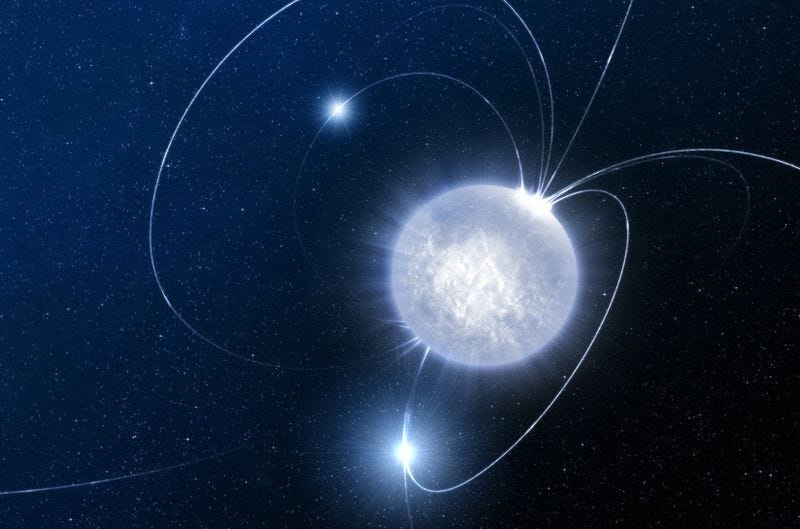
Imagine you’ve got a ball of neutrons that’s spectacularly dense, but where a photon on the surface can still escape off into space and not necessarily spiral in to the neutron star itself. Now, let’s place one more neutron on that surface, and suddenly the core itself can’t hold up against gravitational collapse. But rather than thinking about what’s happening at the surface, let’s think about what’s happening inside the region where the black hole is forming.
Imagine an individual neutron, made up of quarks and gluons, and imagine how the gluons need to travel from one quark to another within a neutron in order to exchange forces.

Now, one of these quarks is going to be closer to the singularity at the center of the black hole than another, and another will be farther away. For an exchange of forces to happen — and for a neutron to be stable — a gluon will have to travel, at some point, from the closer quark to the farther quark. But even at the speed of light (and gluons are massless), that’s not possible! All null geodesics, or the path an object moving at the speed of light will travel along, will lead to the singularity at the center of the black hole. Moreover, they will never get farther away from the black hole’s singularity than they are at the moment of emission.
That is why a neutron inside of a black hole’s event horizon must collapse to become part of the singularity at the center.

So now, let’s come back to the tether example. Whenever any particle crosses the event horizon, it’s impossible for any particle — even light — to escape from it again. But photons and gluons are the very particles we need to exchange forces with the particles that are still outside the event horizon, and they can’t go there!
This doesn’t necessarily mean that your tether will snap; it more likely means that the rushing ride towards the singularity will pull your entire ship in. Sure, the tidal forces, under the right conditions, won’t tear you apart, but that’s not what makes reaching the singularity inevitable. Rather, it’s the incredible attractive force of gravitation and the fact that all particles of all masses, energies and velocities have no choice but to head towards the singularity once they cross the event horizon.
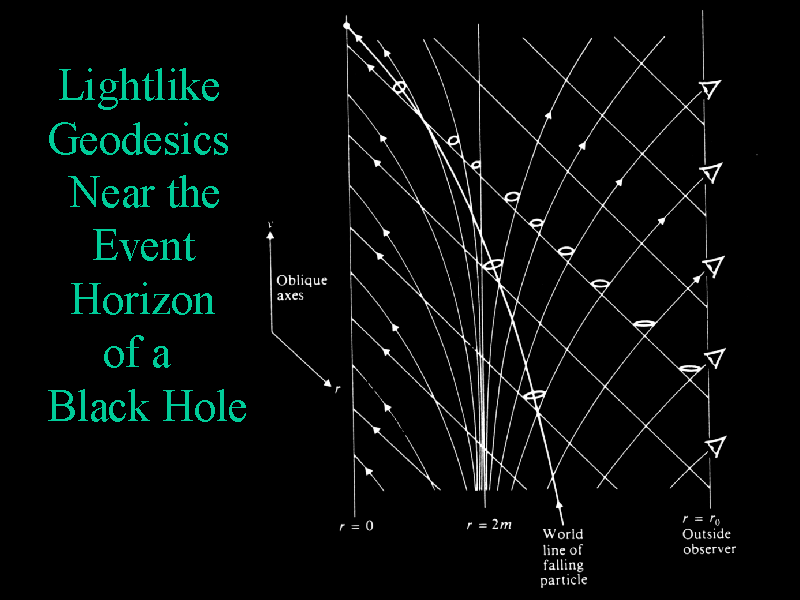
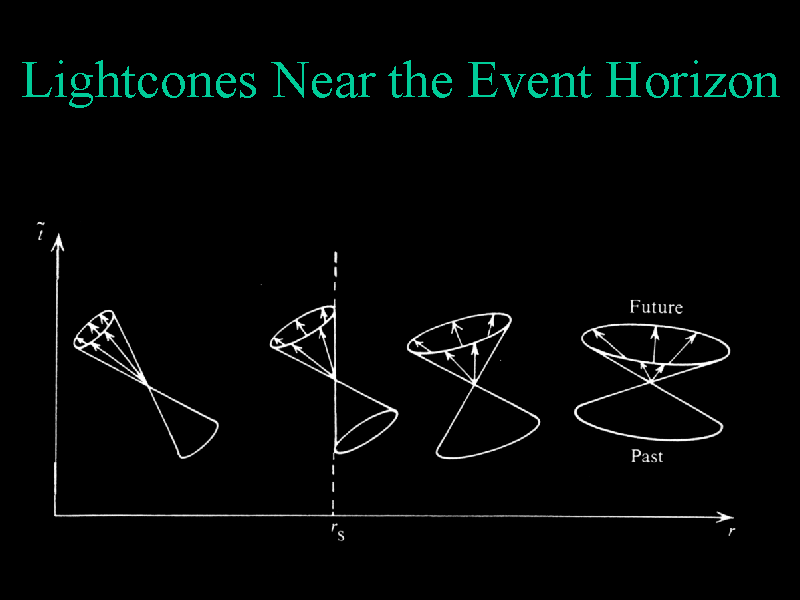
And for that reason, I’m sorry to say, there is still no way out of a black hole once you cross the event horizon. Thanks for a great question, and I hope you enjoyed the ride! If you’ve got a suggestion for next week’s Ask Ethan, send it in here. You never know: next week’s column might be exactly what you’ve been waiting for.
Leave your comments at the Starts With A Bang forum on Scienceblogs!





